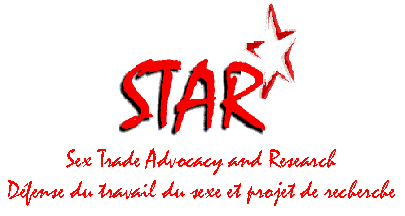 Exotic Dancing: Health and Safety This report is the result of the work of the Exotic Dancers Health and Safety Work Group called together under the auspices of the Region of Peel Health Department (Peel Health) and research conducted by members of Sex Trade Advocacy and Research (STAR). It identifies the risks to health and safety encountered in the work of exotic dancing in Ontario, the causes of these risks, the legislation and policies that are relevant to them, and makes recommendations for ways to improve the work environment of dancers. In Ontario today the vast majority of dancers work freelance. As freelancers they can choose when, where and how often they work, but they are typically denied the protections available to employees through legislation that deals with the workplace and occupations. In interviews for the STAR research project, exotic dancers spoke of numerous occupational health and safety risks posed by their work, including:
Existing federal and provincial (Ontario) legislation and municipal by-laws and enforcement policies were reviewed to identify areas of legislative and enforcement responsibility for the health and safety concerns raised by dancers. Recommendations for improving the occupational health and safety of dancers through modifications and enforcement of existing codes, acts, laws and by-laws are specified in the concluding chapter of the report. Public Health Units, municipal governments, provincial governments and relevant federal, provincial and municipal offices are called on to review existing legislation with the goal of incorporating modifications to the legislation to improve dancer health and safety on the job and to enforce existing legislation that could correct the problems outlined by dancers.
|